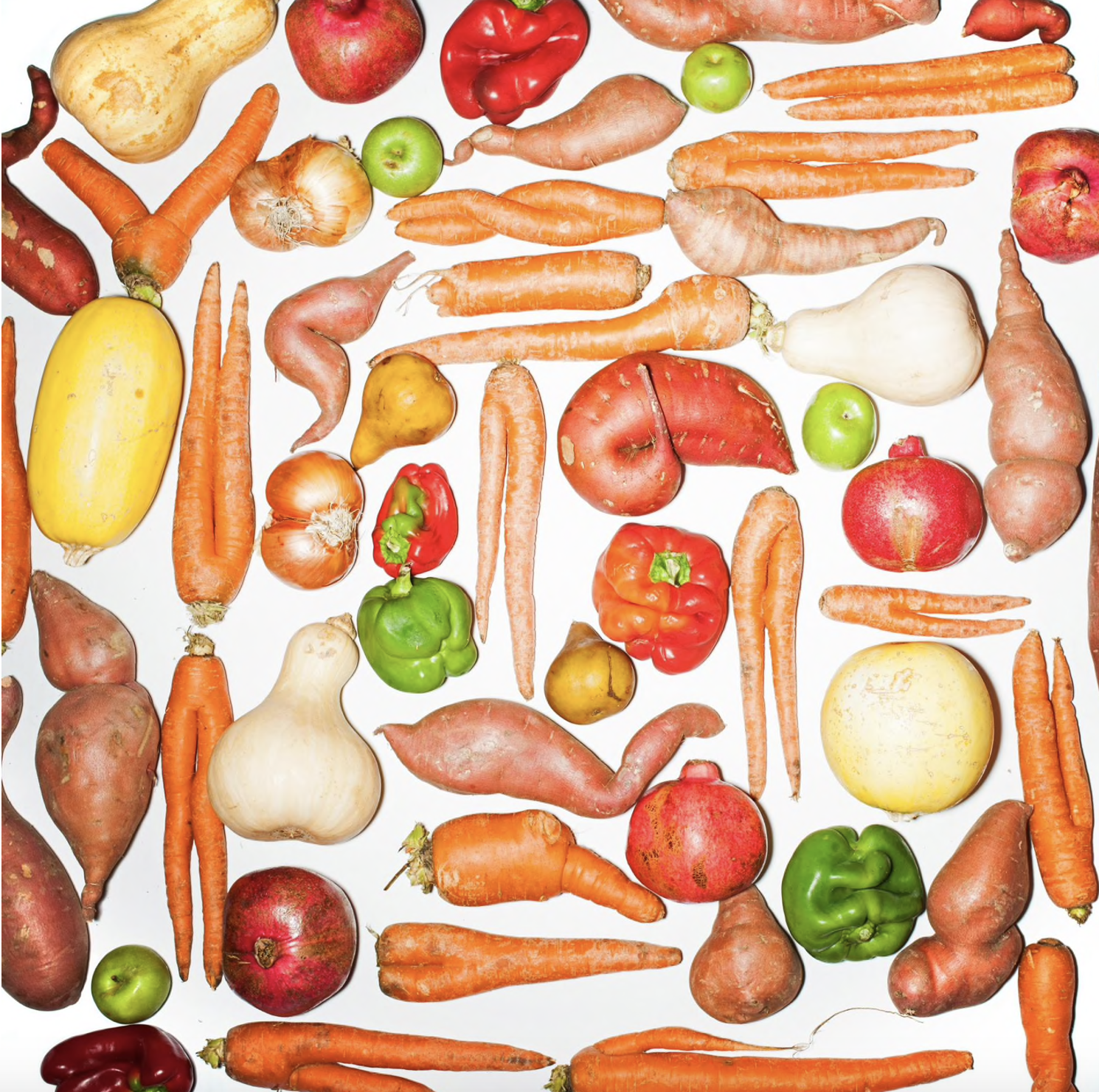
Perfectly edible produce is discarded purely for aesthetic reasons, contributing to huge amounts of food waste.
Have you ever picked up an apple based on its shiny and smooth skin? Rejected an orange because it is more green than orange? Discarded a banana because of its brown spots? If you answered yes to any of these questions, you’re not alone. Everyday, people like you and I, choose fruits and vegetables based on their appearance, and how ‘normal’ they look. Produce that is deemed ‘ugly’ because of being bruised, discoloured, or misshaped is discarded, and large amounts of perfectly edible food end up as waste.
As a food blogger, there is always a requirement for your pictures to be appealing. Produce that is fresh, vibrant, and uniformly coloured is preferred because of purely aesthetic reasons. Though I have been guilty of choosing a ‘better looking’ fruit for a picture on occasion, I try to ensure that I don’t discard the parts with blemishes and use them in my cooking.
Let’s take a look at the impact of food wastage on the environment, reasons that contribute to waste, and how we can tackle this problem in our own way.
Causes & Concerns
According to the UN, about one-third of global food production is discarded or uneaten, and therefore ‘wasted.’ This waste not only has a negative impact on the environment, but it also causes huge losses to the economy, impacting overall nutrition, depleting natural resources, and accelerating climate change. A major cause of food wastage in India is the disorganisation of the food supply chain. Especially in developing countries, logistical issues and lack of proper cold storage facilities results in vast amounts of perishable food going to waste before it even gets to the consumer.
There are many such serious issues that contribute to wastage, and appearance is just one such problem. Rejecting ugly produce is common specially in North America and Europe, where the appearance of fresh produce is of utmost importance. It’s also a problem that occurs in urban India, where disposable incomes are high and people prefer shopping in big supermarkets and international food stores. Here, appearances are everything. The market is air-conditioned, the aisles are clean, and the produce is neatly arranged. There is no room for imperfect fruits or vegetables here, and they are either wasted, thrown out, or sent back to the vendor.
In the local Indian vegetable markets however, this wastage is cut down greatly. The shop owners remove the parts with blemishes, and sell it for a cheaper price, a solution that prevents a lot of edible food from being wasted.
Another instance when waste occurs in urban India is when people prefer to buy imported produce that comes with all the right labels like ‘organic,’ rather than thinking about it in a local context. Supporting local farmers and buying seasonal produce instead would help the local food systems become sustainable, minimising wastage that occurs at a regional level.
Reducing Waste: What is being done?
In India, the Government needs to invest in developing more efficient food production and preservation technologies, improve supply-chain management, and provide better infrastructure for food storage.
In addition to these efforts, there are a few Indian organisations that are working to reduce waste. DesiVDesi Foods is an Indian start-up that is helping farmers tackle the waste that occurs for perishable items due to logistical problems. They develop and distribute solar dryers that help farmers dehydrate their produce, increasing the shelf life upto a year. Farm-to-door delivery services like Farm Direct Online and Back2Basics patronise local farmers and encourage consumers to eat fresh, organic, local, and seasonal. The weekly or bi-weekly home-delivery service cuts down costs, logistical problems, thereby reducing food-waste. Volunteer-based organisation, The Robin Hood Army, collects surplus food from restaurants and re-distributes it to the less fortunate — doing their part to help the cause.
Reducing Waste: How can you help?
Though these efforts are definitely helping us move in the right direction, there is a lot more that we can do personally in order to reduce food wastage in urban households. Here are a few ways that you can help fight this global problem on a local level:
- Patronising local farmers, and shopping from local vegetable markets
- Purchasing what is seasonal, in order to reduce wastage that occurs when food that is produced is not sold or consumed
- Meal planning so that we only buy what we need and don’t let fresh produce spoil in the refrigerator
- Using leftovers
- Limiting portion sizes to not waste food on the plate
- Not choosing fresh produce based on appearance, because ugly produce is beautiful too
What are some of the ways you think you can help reduce food wastage?
Let us know: leave a comment below, or tag @sprigandvine.in on Facebook & Instagram. You can even tweet us your suggestions @sprigandvineIN. Don’t forget to hashtag #goodfoodpractices!
Image Source: National Geographic, photo by Brian Finke






Heartening to see the young brigade be so aware and think about the economic implications of food wastage. The world will be a better place if we all do something about it…kudos vidushi!